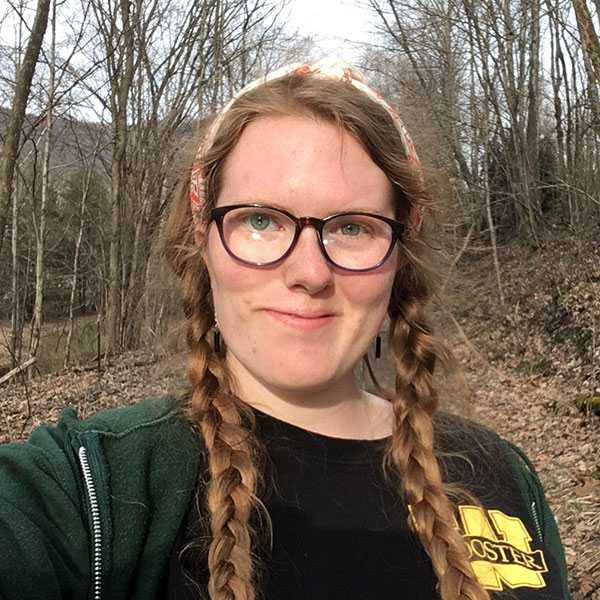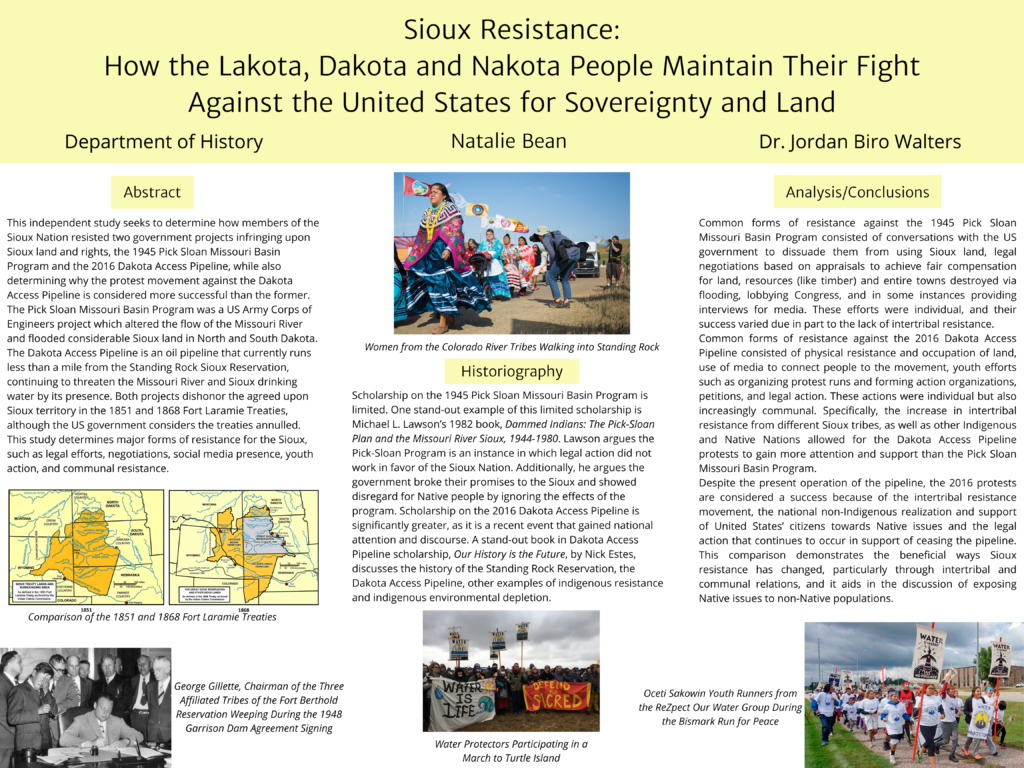
Sioux Resistance: How the Lakota, Dakota and Nakota People Maintain Their Fight Against the United States for Sovereignty and Land

Name: Natalie Bean
Major: History
Minor: French and Francophone Studies
Advisor: Dr. Jordan Biro Walters
This independent study seeks to determine how members of the Sioux Nation resisted two government projects infringing upon Sioux land and rights, the 1945 Pick Sloan Missouri Basin Program and the 2016 Dakota Access Pipeline, while also determining why the protest movement against the Dakota Access Pipeline is considered more successful than the former. The Pick Sloan Missouri Basin Program was a US Army Corps of Engineers project which altered the flow of the Missouri River and flooded considerable Sioux land in North and South Dakota. The Dakota Access Pipeline is an oil pipeline that currently runs less than a mile from the Standing Rock Sioux Reservation, continuing to threaten the Missouri River and Sioux drinking water by its presence. Both projects dishonor the agreed upon Sioux territory in the 1851 and 1868 Fort Laramie Treaties, although the US government considers the treaties annulled. This study determines major forms of resistance for the Sioux, such as legal efforts, negotiations, social media presence, youth action, and communal resistance. It contributes to discussions of Native resistance, Sioux resistance, and exposes the continuance of US colonization practices against American Indians in modern times. These subjects are important to recognize and combat against.

Posted in Comments Enabled, Independent Study, Symposium 2022 on April 29, 2022.
10 responses to “Sioux Resistance: How the Lakota, Dakota and Nakota People Maintain Their Fight Against the United States for Sovereignty and Land”
Related Posts
Related Areas of Study
History
Critically examine events and societies of the past and learn to tell the stories future generations need to know
Major MinorFrench & Francophone Studies
French language, literature and culture with study abroad and outside-the-classroom immersion opportunites
Major Minor


Natalie, such vital questions you’re exploring! I’d love to know if you think other recent First Nations protests (such as the Wet’suwet’en protests in BC) are following a similar model compared to earlier protests in Canada, for example.
Excellent project! Very informative and hopeful for these nations!
Excellent project! Very informative and hopeful for these nations!
Great study and poster!
Great job Natalie!!
A very interesting topic. And nice work on the poster Natalie!
Thanks so much for sharing your research, Natalie! I enjoyed hearing all about it at the poster presentation. Great display of a year of hard work!!!
Thank you for the excellent poster on the interesting topic, Natalie! Best wishes for your post-graduation plan. – Prof. Park
Excellent work on a VERY important topic! There’s still a lot of work to be done and a lot of learning on the part of non-Native individuals—something I see firsthand in Minnesota.
Bravo, Natalie. I am so happy to read about your work.